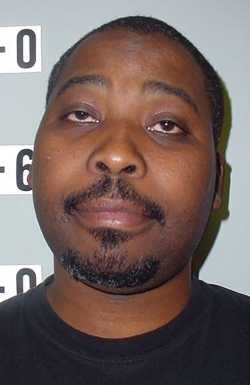LAKE COUNTY, Calif. – The American Lung Association's latest State of the Air report has given Lake County an “A” grade, ranking it amongst the top counties nationwide for clean air.
The 2011 report, which includes lists of the nation's most polluted metropolitan areas, was released Wednesday.
For several years Lake County has been ranked a top clean air county, and this year it was ranked No. 6 for cleanest counties based on year-round particle pollution.
Of the 25 counties on that list, the only California counties listed were Lake and San Benito.
The No. 6 ranking was an improvement over the No. 10 ranking the county received in the 2010 report. It 2009 Lake County was ranked No. 3 nationwide.
The report showed that Lake County received an “A” for having no high ozone days from 2007 to 2009, but received a “B” grade for having two high particle pollution days, also in the 2007 to 2009 time frame.
That latter grade was likely influenced by the Walker Fire and other regional forest fires in 2008 which caused several local air quality warnings during the summer months.
In California, in addition to Lake County, those receiving “A” grades overall were Humboldt, Marin, Mendocino, San Francisco, San Mateo, Santa Cruz, Siskiyou and Sonoma.
The report found that the majority of American cities most-polluted by ozone (smog) or year-round particle pollution (soot) have improved, showing continued progress in the cleanup of deadly toxics, thanks to the Clean Air Act.
Though progress has been made, the American Lung Association said some members of Congress are working to weaken the Clean Air Act and public health protection it provides.
The Lung Association's annual air quality report, available at www.stateoftheair.org, reveals that just over half the nation – 154.5 million people – live in areas with levels of ozone and/or particle pollution that are often dangerous to breathe.
State of the Air 2011 finds the Clean Air Act is working. All metro areas in the list of the 25 cities most polluted by ozone showed improvement over the previous report, and 15 of those cities experienced the best year yet. All but two of the 25 cities most polluted with year-round particle pollution improved over last year's report.
However, only 11 cities among those most polluted by short-term spikes in particle pollution experienced improvement.
“State of the Air tells us that the progress the nation has made cleaning up coal-fired power plants, diesel emissions and other pollution sources has drastically cut dangerous pollution from the air we breathe,” said Charles D. Connor, American Lung Association president and chief executive officer. “We owe our cleaner air to the Clean Air Act. We have proof that cleaning up pollution results in healthier air to breathe. That's why we cannot stop now. Half of our nation is still breathing dangerously polluted air. Everyone must be protected from air pollution.”
The State of the Air 2011 report grades cities and counties based, in part, on the color-coded Air Quality Index developed by the U.S. Environmental Protection Agency (EPA) to help alert the public to daily unhealthy air conditions.
The 12th annual release of the Lung Association's report uses the most recent EPA data collected from 2007 through 2009 from official monitors for ozone and particle pollution, the two most widespread types of air pollution.
Counties are graded for ozone, year-round particle pollution and short-term particle pollution levels. The report also uses EPA's calculations for year-round particle levels.
The report identified Honolulu, Hawaii and Santa Fe-Espanola, N.M. as the cleanest cities – the only two cities in the nation that were among the cleanest for year-round particle pollution and also had no days when ozone and daily particle pollution levels reached unhealthy ranges.
The report also found that one in five Americans breathe dangerous levels of deadly particle air pollution.
Nearly 60 million Americans (19.8 percent) live in counties with too many unhealthy spikes in particle pollution levels, and 18 million people live with unhealthy year-round levels of particle pollution.
Particle levels can spike dangerously for hours to weeks on end (short-term) or remain at unhealthy levels on average every day (year-round).
“Particle pollution kills,” said Norman H. Edelman, M.D., American Lung Association chief medical officer. “When you breathe these microscopic particles, you are inhaling a noxious mix of chemicals, metals, acid aerosols, ash and soot that is emitted from smokestacks, tailpipes, and other sources. It is as toxic as it sounds and can lead to early death, asthma exacerbations, heart attacks, strokes and emergency room visits in substantial numbers. Science clearly has proven that we need to protect the health of the public from the dangers of particle pollution.”
Only 10 counties received an “F” for year-round particle pollution, a reflection of progress made under the Clean Air Act. Bakersfield, Calif. tops both lists of cities most-polluted by short-term and annual particle pollution. Bakersfield and Hanford, Calif. were the only two cities where year-round particle levels worsened over the previous report.
State of the Air 2011 finds that nearly half the people in the U.S. (48.2 percent) live in counties that received an “F” for air quality due to unhealthy ozone levels.
Ozone (smog) is the most widespread air pollutant, created by the reaction of sunlight on emissions from vehicles, power plants and other sources.
When ozone is inhaled, it irritates the lungs. It can cause immediate health problems and continue days later. Ozone can cause wheezing, coughing, asthma attacks and even premature death.
Lists of the most polluted cities follow.
Nation's most polluted cities
Most ozone-polluted cities
1. Los Angeles-Long Beach-Riverside, Calif.
2. Bakersfield-Delano, Calif.
3. Visalia-Porterville, Calif.
4. Fresno-Madera, Calif.
5. Sacramento-Arden-Arcade-Yuba City, Calif.-Nev.
6. Hanford-Corcoran, Calif.
7. San Diego-Carlsbad-San arcos, Calif.
8. Houston-Baytown-Huntsville, Texas
9. Merced, Calif.
10. Charlotte-Gastonia-Salisbury, N.C.-S.C.
Cities most polluted by short-term particle pollution
1. Bakersfield-Delano, Calif.
2. Fresno-Madera, Calif.
3. Pittsburgh-New Castle, Pa.
4. Los Angeles-Long Beach-Riverside, Calif.
5. Salt Lake City-Ogden-Clearfield, Utah
6. Provo-Orem, Utah
7. Visalia-Porterville, Calif.
8. Birmingham-Hoover-Cullman, Ala.
9. Hanford-Corcoran, Calif.
9. Logan, Utah-Idaho
9. Sacramento-Arden-Arcade-Yuba City, Calif.-Nev.
Cities most polluted by year-round particle pollution
1. Bakersfield-Delano, Calif.
2. Los Angeles-Long Beach-Riverside, Calif.
2. Phoenix-Mesa-Glendale, Ariz.
2. Visalia-Porterville, Calif.
5. Hanford-Corcoran, Calif.
6. Fresno-Madera, Calif.
7. Pittsburgh-New Castle, Pa.
8. Birmingham-Hoover-Cullman, Ala.
9. Cincinnati-Middletown-Wilmington, Ohio-Ky.-Ind.
10. Louisville-Jefferson County-Elizabethtown-Scottsburg, Ky.-Ind.
10. Modesto, Calif.
Follow Lake County News on Twitter at http://twitter.com/LakeCoNews, on Facebook at http://www.facebook.com/pages/Lake-County-News/143156775604?ref=mf and on YouTube at http://www.youtube.com/user/LakeCoNews.

 How to resolve AdBlock issue?
How to resolve AdBlock issue? 







